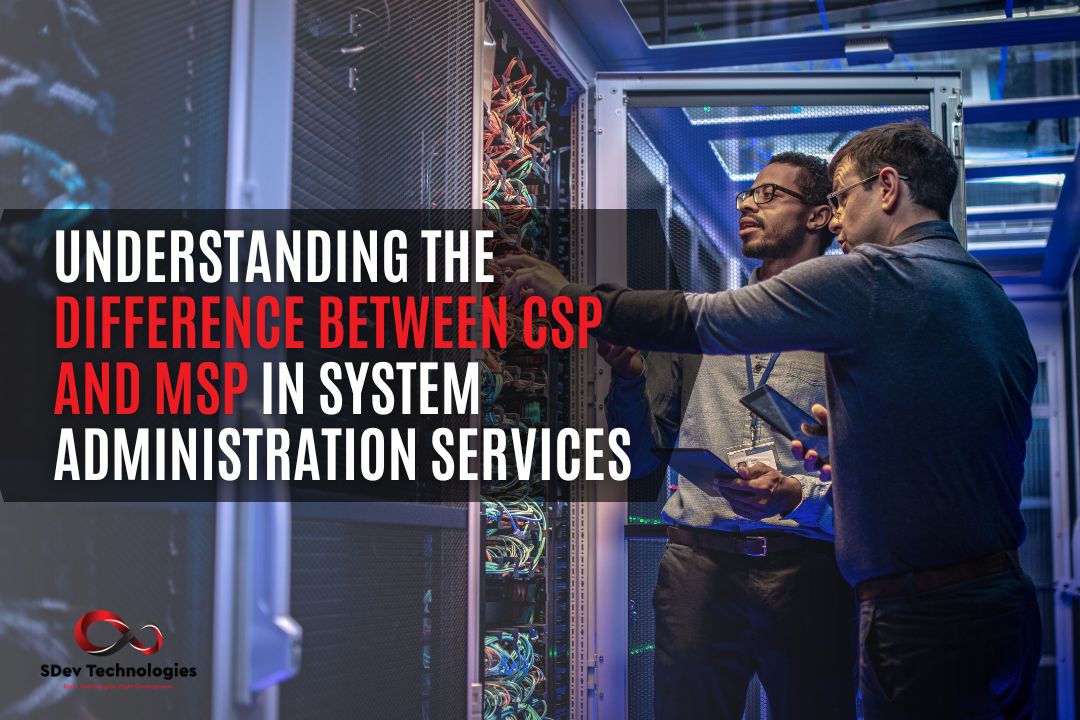In the realm of system administration services, two commonly used terms are CSP (Cloud Service Provider) and MSP (Managed Service Provider). While both play crucial roles in managing IT infrastructure, they differ in their core functions and responsibilities. This blog post aims to shed light on the distinctions between CSP and MSP, exploring their roles, benefits, and how they contribute to efficient system administration. So, let’s dive in and understand the dissimilarities between CSP and MSP.
CSP (Cloud Service Provider) Explained
Cloud Service Providers (CSPs) are entities that offer cloud computing services, allowing businesses to host their applications, data, and services on virtual platforms. CSPs provide infrastructure, such as servers, storage, and networking resources, and deliver them as a service over the internet. Examples of well-known CSPs include Amazon Web Services (AWS), Microsoft Azure, and Google Cloud Platform (GCP).
CSPs are responsible for maintaining the underlying infrastructure, including hardware, network, and data centers. They ensure the availability, scalability, and security of the infrastructure, enabling businesses to focus on their core operations without worrying about managing physical servers.
MSP (Managed Service Provider) Explained
Managed Service Providers (MSPs), on the other hand, offer comprehensive IT management and support services to businesses. MSPs act as an extension of the client’s IT department, providing a range of services, such as network monitoring, data backup and recovery, software updates, cybersecurity, and help desk support.
Unlike CSPs, MSPs focus on managing and optimizing the entire IT environment of a business, regardless of whether it is hosted in the cloud, on-premises, or a hybrid infrastructure. MSPs offer proactive monitoring and maintenance to prevent issues, ensure system availability, and improve performance. They also provide strategic IT consulting, helping businesses align their technology infrastructure with their objectives.
Key Differences and Benefits
a. Scope of Services:
- CSPs primarily offer infrastructure services, delivering virtualized resources and platforms to businesses. They focus on managing the underlying hardware and infrastructure components.
- MSPs offer a broader range of services, including infrastructure management, application management, IT security, and technical support. They focus on managing the entire IT ecosystem and aligning it with the client’s business goals.
b. Responsibility:
- CSPs take responsibility for maintaining the availability, scalability, and security of the infrastructure they provide. They ensure that the servers, storage, and networking resources are accessible and meet service level agreements.
- MSPs take on the responsibility of managing the overall IT environment, including infrastructure, applications, security, and user support. They strive to optimize the client’s IT operations, enhance productivity, and reduce downtime.
c. Flexibility and Scalability:
- CSPs offer high scalability and flexibility, allowing businesses to scale their infrastructure resources up or down based on demand. They provide a pay-as-you-go model, enabling businesses to pay only for the resources they use.
- MSPs offer flexibility in terms of tailoring their services to the specific needs of each client. They can adapt to changing requirements, provide personalized solutions, and assist in strategic IT planning.
Conclusion
In summary, while both CSPs and MSPs are essential in the realm of system administration services, they have distinct roles and responsibilities. CSPs primarily focus on providing infrastructure services and managing the underlying hardware and resources, while MSPs take a more comprehensive approach by managing the entire IT environment and offering a broader range of services. By understanding the differences between CSP and MSP, businesses can make informed decisions about which service provider best aligns with their specific needs and goals in system administration.
Remember, whether you opt for CSP services or partner
At SDev Tech, we recognize the importance of efficient system administration services and understand the unique requirements of businesses in today’s digital landscape. As a leading Managed Service Provider (MSP), we offer comprehensive solutions tailored to meet your organization’s specific needs. Our team of experienced professionals excels in managing and optimizing IT environments, ensuring system availability, enhancing security measures, and providing top-notch technical support. With our expertise and proactive approach, we help businesses streamline their operations, minimize downtime, and stay ahead in a rapidly evolving technological landscape. Partner with SDev Tech for reliable and effective system administration services that empower your business to thrive.







